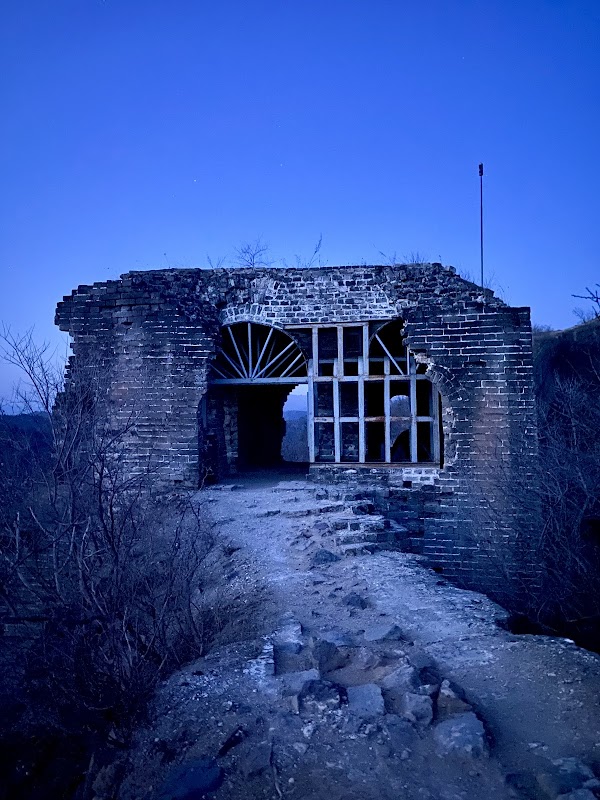Hiking Beijing’s Quiet Giants: Exploring the Lesser-Known Great Wall for History and Wilderness
Escape the crowds and immerse yourself in history on the lesser-known stretches of the Great Wall near Beijing. Experience rugged terrain, sweeping mountain views, and ancient watchtowers while navigating trails rich with natural beauty and cultural stories.
Wear sturdy hiking boots
The uneven stone steps and loose gravel on these sections require solid footwear with good ankle support to prevent injuries.
Start early to avoid heat
Begin your hike in the morning when temperatures are cool and lighting highlights the Wall’s textures for better photos.
Carry sufficient water
Bring at least 2 liters per person since natural water sources along the trail are scarce and unsafe to drink.
Prepare for rapidly changing weather
Pack a lightweight rain jacket especially from late spring to early fall, as sudden showers can dampen the trail.
Hiking Beijing’s Quiet Giants: Exploring the Lesser-Known Great Wall for History and Wilderness
Stretching across mountains that breathe with the wind and forests that whisper centuries-old secrets, the less-crowded sections of the Great Wall near Beijing offer both an immersive historical escape and a natural adventure free from the usual throngs. Unlike the overrun Badaling or Mutianyu spots, areas like Jiankou, Gubeikou, and Huanghuacheng challenge hikers with unrefined terrain and offer sweeping views where the Wall stands fierce and raw, fiercely itself.
Starting with Jiankou, this section demands attention with its steep ascents and crumbling stone steps. The 10 km trail pushes you through restored and wild wall stretches, climbing about 400 meters in elevation gain. Rocky outcrops dare you forward while ancient watchtowers peek through thick pine forests that shelter fluttering birds and the occasional agile squirrel.
To the northeast, Gubeikou presents an equally rugged but historically rich hike. The terrain undulates over 12 km with moderate elevation shifts around 350 meters. Here, the Wall remains strewn with weathered bricks, telling stories of battles and passing dynasties. The vegetation forms a protective canopy; the breeze carries the scent of moss and damp earth, offering reprieve from the sun’s climb.
Huanghuacheng offers a splash of water-bound adventure where the Wall dips into turquoise reservoirs, reflecting watchtowers like ancient eyes. The terrain involves mixed surfaces, with some stone steps replaced by loose gravel and exposed roots. This 8 km route is gentler but no less rewarding, especially in spring when wildflowers crowd the slopes.
Practical preparation is essential. Footwear with solid grip and ankle support is a must for the uneven, sometimes slippery stone and earth paths. Carry at least 2 liters of water per person, as natural sources are rare and not suitable for drinking. Early morning starts help avoid midday heat and enhance visibility for photography. Weather can turn quickly; a light waterproof layer is recommended especially from late spring through early fall.
Each step on these less-trodden paths engages with the Wall as a living force rather than a relic—an ancient structure still shaped by weather and time. These trails don’t just invite discovery but demand respect, revealing a rugged beauty forged in history and nature’s persistence.
Nearby Trips
All Adventures
Boat Charters
Water Activities
Adventures near Beijing
Discover the unique and memorable adventures that make Beijing special.
Frequently Asked Questions
Are these less-crowded sections safe for solo hikers?
While generally safe during daylight hours, these sections are more remote with uneven terrain and limited cell reception. Solo hikers should be well-prepared, carry a map or GPS, and inform someone of their itinerary.
How do I get to these less-visited portions of the Wall from Beijing?
Jiankou and Gubeikou can be reached by public bus or private car from central Beijing, usually within 2 hours. Huanghuacheng is accessible via a train to Huanghuacheng Station followed by a short taxi ride.
Is guided support recommended for these trails?
For first-timers or those unfamiliar with rugged hiking, a local guide enhances safety and provides historical insights. Experienced hikers comfortable with navigation may go self-guided.
Can I find food or lodging near these hiking areas?
Small guesthouses and local eateries exist near Gubeikou and Huanghuacheng, but options are limited. It’s best to bring snacks and plan accommodation in Beijing or nearby towns like Miyun.
What wildlife might I see on these hikes?
Expect to spot squirrels, various songbirds, and occasionally larger mammals like deer or wild boar, though the latter tend to avoid hikers.
Are there any special permits required to hike these sections?
No special permits are required, but entry fees may apply at some access points. It’s advisable to check the latest information and abide by local conservation rules.
Recommended Gear
Hiking boots
Protect your feet and ankles; the rocky and uneven steps demand sturdy footwear.
Water bottle or hydration system
Hydration is key; the trail offers few safe water points.
Light rain jacket
Be ready for swift rain showers that commonly arrive in warmer months.
Trekking poles
Helpful for stability on steep ascents and descents, especially on loose gravel.
Local Insights
Hidden Gems
- "The secluded Yong'an Tower on Jiankou offers sweeping views rarely seen by crowds."
- "A small ancient village near Gubeikou preserves Ming dynasty watchtower ruins accessible by short detours."
- "Huanghuacheng’s submerged Wall sections provide a unique perspective where stone meets water."
Wildlife
- "Chinese hwamei birds vocalize through the forests, their calls blending with the wind."
- "Siberian roe deer occasionally emerge at dawn from the tree line."
- "The Asian black bear, though rare, roams deeper parts of the surrounding mountains."
History
"These sections of the Wall were strategic military points during Ming dynasty conflicts, with watchtowers acting as signal stations to communicate threats across vast distances."

